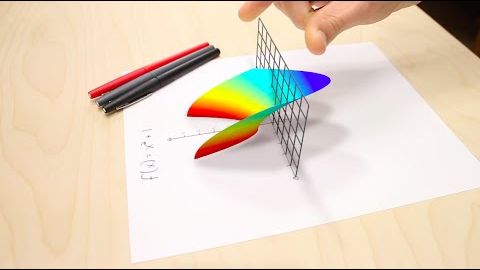虛數是真實的 [第一部分:介紹] (Imaginary Numbers Are Real [Part 1: Introduction])
Ken Wong 發佈於 2021 年 01 月 14 日  沒有此條件下的單字
沒有此條件下的單字US /ˈnɛɡətɪv/
・
UK /'neɡətɪv/
- n.負電極的;否定詞;否定句;底片
- adj.消極的;負的;負面的;否定的;陰性的;負電的
- n. (c./u.)世界;地球;世界;世界;宇宙;領域
US /ˈfʌŋkʃən/
・
UK /'fʌŋkʃn/
- n.事件;函數;功能;運作;函數 (電腦)
- v.i.當作;運作
- n. (c./u.)邊線;界線;具紋線的;線;線條;字行;電話線;隊;排;(細長的)線
- v.t.沿著...排列

